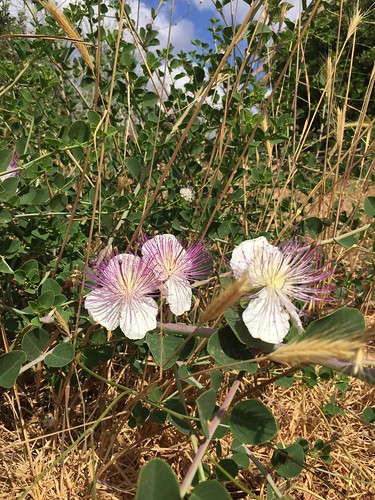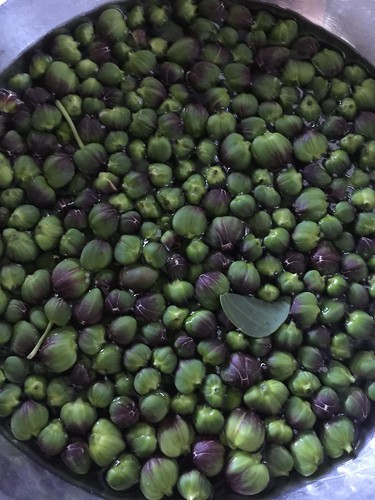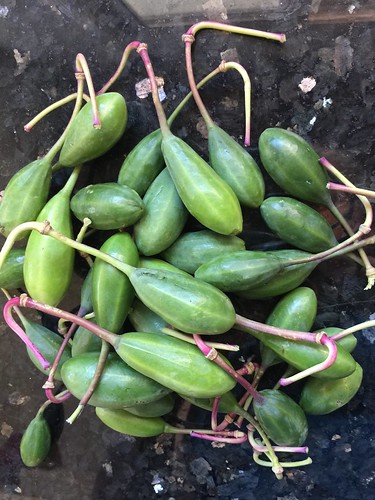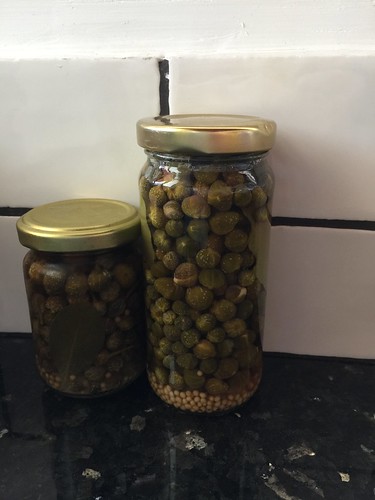Mograbieh & Legume Salad with Pickled Lemon & Ras El Hanout

One of our summer staples and all-time favourites is this wonderfully flexible Mograbieh salad. Both filling and refreshing, with a balance of flavour - salty, tangy, spicy, nutty and milky sweet.
Morgabieh are dried-up semolina balls, about the size of a pearl or as small as a lentil. They are rolled and either kept frozen or left to dry, and can be prepared much like pasta. Because the mograbieh I originally used for this recipe was pearl-sized, I liked to use medium to large sized cooked beans, such as pinto beans with it. Now that I only find very small sized maftoul (the Palestinian version of the same thing), I like to pair it with smaller legumes, especially chickpeas. In all truth though, the mograbieh may be substituted for any pasta shape you have on hand, and paired with any similarly sized and attractively shaped legume. In one instance, I even used star-shaped pasta with lentils.
What gives this dish its distinctive character and flavour is the various textures, colours and seasonings: The texture ranges from al-dente pasta and buttery cooked legumes, crunchy onions, and pop of flavour and colours from the various pickled lemons, sun-dried tomatoes, black olives, capers and more.
INGREDIENTS:
2 cups cooked pinto beans or chickpeas
200 g mograbieh or maftoul, cooked to al-dente stage (see instructions on the package you purchase)
1 medium sweet onion, minced
1 handful of sundried tomatos, chopped
1 handful brined and wrinkly black olives (Moroccan-style), rinsed, pitted and chopped
1-2 Tbs capers, rinsed
1/2 lemon, cut lengthwise into quarters and sliced very thinly
1/4-1 tsp chili flakes or to taste (depending on how spicy you want your salad to be; I like to use Korean chili flakes which are very mild)
1/2 tsp Ras El Hanout
1/2 Sweet red or yellow bell pepper, quartered and sliced (optional)
Olive oil, to taste
- Prepare each ingredient as described. Set aside
- While the beans and/or Mograbieh are still warm, add the olive oil, spices, sun-dried tomatoes, olives and capers.
- Wait for everything to cool off completely before adding the onions and lemons.
- I like to let this sit in the fridge for at least a few hours if not over night before serving. This allows for all the flavours to marinate, and the fresh lemons turns into lemon pickles!
- Just before serving, add a few slices of quartered bell peppers to the salad. The rest of the salad keeps for at least a week in the fridge otherwise. It's like a meal all on its own, full of flavour and nutritious as well (grains, especially whole, and legumes together, form a complete set of all the 22 necessary amino acids). All of these points make this dish an excellent choice for picnic and camping trips too. I have so many fond memories of this salad, it has nourished me in more circumstances than I care to detail here. And brought good memories of lakeside camping and beach picnics from my happiest days when I was stuck at the hospital half of last summer, caring for my daughter. It certainly has merit!
Bon Appetite!






